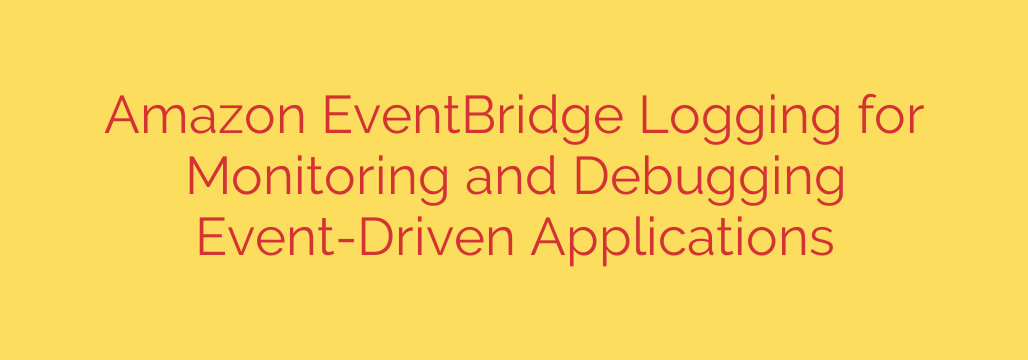
Mastering EventBridge: Logging for Robust Monitoring and Debugging
In the world of event-driven architectures, Amazon EventBridge acts as a central nervous system, routing events between different services and applications. But with great power comes great responsibility, and understanding how to effectively monitor and debug your EventBridge setup is crucial for ensuring the health and reliability of your entire system. This guide delves into the essential aspects of EventBridge logging, empowering you to build more resilient and observable applications.
One of the first steps is understanding why logging is critical in an event-driven environment. Because events trigger cascading actions across multiple services, issues can be difficult to trace. Effective logging provides the breadcrumbs you need to follow the event’s journey, identify bottlenecks, and quickly resolve errors.
So, how do you actually implement robust logging in EventBridge? Here are key areas to focus on:
CloudWatch Logs: EventBridge seamlessly integrates with CloudWatch Logs, making it the primary destination for your log data. You can configure rules to send specific events, or even a sample of events, to CloudWatch Logs for analysis. This is essential for tracking the overall health of your event bus.
Filtering and Transformation: Don’t just dump everything into your logs. Utilize EventBridge’s powerful filtering capabilities to select only the events that are relevant to your monitoring needs. You can also use input transformers to enrich log messages with additional context, making them more informative.
Dead-Letter Queues (DLQs): Implement DLQs for your rules. When an event fails to be processed, it’s automatically sent to the DLQ, which acts as a safety net. Analyzing the events in your DLQ can reveal critical issues with your target services. Treat your DLQ as a high-priority inbox.
Enable CloudTrail: CloudTrail logs all API calls made to EventBridge. This is invaluable for auditing purposes and for diagnosing configuration errors. You can see who made changes to your rules, event buses, and other EventBridge resources. Always enable CloudTrail for your EventBridge deployments.
Monitor Metrics: EventBridge provides a range of metrics through CloudWatch, such as the number of events published, the number of events that matched rules, and the number of failed invocations. Set up alarms on these metrics to proactively detect and address potential problems. Pay special attention to metrics related to throttled events, which could indicate scaling issues.
Centralized Logging: Aggregate logs from all of your services into a central location. Tools like CloudWatch Logs Insights or third-party log management platforms can help you analyze and correlate events across your entire distributed system. This enables you to gain a holistic view of your application’s behavior.
Security Tip: Always ensure that your CloudWatch Logs groups and EventBridge resources are properly secured with IAM roles and policies. Limit access to sensitive log data and prevent unauthorized modifications to your EventBridge configuration.
Effective EventBridge logging is more than just collecting data; it’s about having a clear strategy for monitoring, debugging, and securing your event-driven applications. By implementing these best practices, you can gain the visibility you need to build reliable and scalable systems that can adapt to changing business needs.
Source: https://aws.amazon.com/blogs/aws/monitor-and-debug-event-driven-applications-with-new-amazon-eventbridge-logging/








